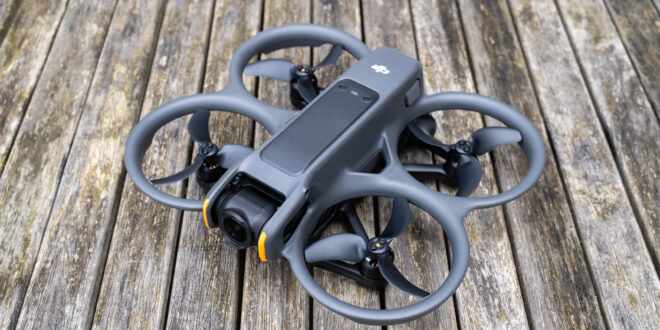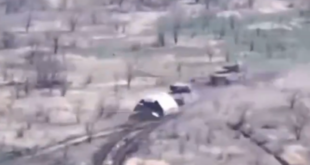Key specs
Weight: 13.30 oz / 377 g
Dimensions: 7.28 x 8.34 x 2.52 in / 185 × 212 × 64 mm
Battery: 2420 2150 mAh / up to 23 minutes
Charger type: Type-C to Type-C PD Cable / Three Battery Charging Hub
Modes: Normal, Sport, Manual (Manual only with FPV Controller 2)
Video transmission range: Up to 8 miles / 13 km (FCC) / up to 6.2 miles / 10 km (CE/SRRC/MIC)
Video resolution: 4K, 2.7K, 1080p
Frame rates: 4K up to 60 fps / 2.7K up to 120 fps / 1080p up to 120 fps
DJI is one of those companies that rarely fails to surprise. Who would have guessed that just under two years after the launch of the popular DJI Avata, we’d be welcoming the DJI Avata 2 alongside new goggles and controllers? This new model sees plenty of upgrades, firmly cementing it as one of the best drones available and one of the best FPV kits for beginners and experienced FPV pilots alike.
The Avata 2 is slightly lighter than its predecessor with a more aerodynamic design that has bumped up flight times by a few minutes in real-world conditions. It doesn’t sound like much, but in the FPV world flight times are typically short, so this is substantial. It also remains incredibly fun to fly thanks to the immersive FPV experience it provides, but with the new Easy ACRO feature, users of the DJI Motion 3 controller can now perform basic aerial stunts.
The DJI Avata 2 is available in a single-battery Fly More Bundle for $999 / £879. This bundle includes the DJI Motion 3 Controller, DJI Goggles 3, a PD (USB-C) charging and data cable, spare propellers, and other basic accessories. The three-battery Fly More Bundle costs $1199 / £1049 and includes all of the above, but it also comes with a battery charging hub and a carry bag for everything.
DJI Avata 2: Design
- Cinewhoop design
- Reduced weight compared to Avata
- Two controller options
The Avata 2 follows the cinewhoop style design where propeller guards are built around the propellers to protect them and objects in the event of a crash. In terms of dimensions, the Avata 2 is slightly longer and wider than its predecessor but is also shorter at 7.28 x 8.34 x 2.52 -inches / 185 × 212 × 64mm. The USB-C port has also been moved to a more convenient side location that’s easier to access and allows for computer-based firmware updates using DJI Assistant 2 and to access the 46GB of onboard storage. The microSD card slot can also be found under the same rubber cover.
This new design has helped to create a more aerodynamic airframe with a slightly reduced weight of 13.30 oz / 377 g, which has marginally increased flight times to an advertised duration of up to 23 minutes. In real-world testing, flight times averaged 16 minutes of vigorous flight before Return To Home (RTH) was initiated when the battery reached 20% capacity. You could extend flight times by canceling RTH and flying back at a lower percentage.
The camera sits at the front of the drone and offers mechanical stabilization on the vertical axis. Additional stabilization is provided electronically with RockSteady 3.0, HorizonSteady or it can be switched off. With the latter option, video captured in wide-angle view can be stabilized with the free third-party Gyroflow software which more advanced FPV pilots may prefer because of the amount of customization that’s available.
In the Fly More Bundles, the DJI Motion 3 Controller is included and this requires the pilot to pull the trigger to fly forwards while tilting it forwards or backward to ascend and descend. Turning is achieved simply by tilting the controller to the left or right.
Plus, a circle in the FPV goggles shows a visual representation of where the drone will fly, kind of like a target controlled by the Motion 3. The controller also has a joystick that can be used to make the Avata 2 fly up, down, left and right, while the trigger can be pushed back to fly backward.
For more experienced FPV pilots, the DJI FPV Remote Controller 3 is a standard DJI FPV controller that, by default, allows you to fly the Avata 2 more like a camera drone. You can still enjoy immersive FPV flight and video capture, but the Avata 2 generally behaves like a standard camera drone.
To reconfigure the controller for Manual Mode, you have to release the throttle stick spring by turning two hex screws behind the rubberized grip on the rear of the controller. You also have to adjust some controller settings in the goggles menu before allowing manual flight when the drone is in the air.
DJI Avata 2: Functionality
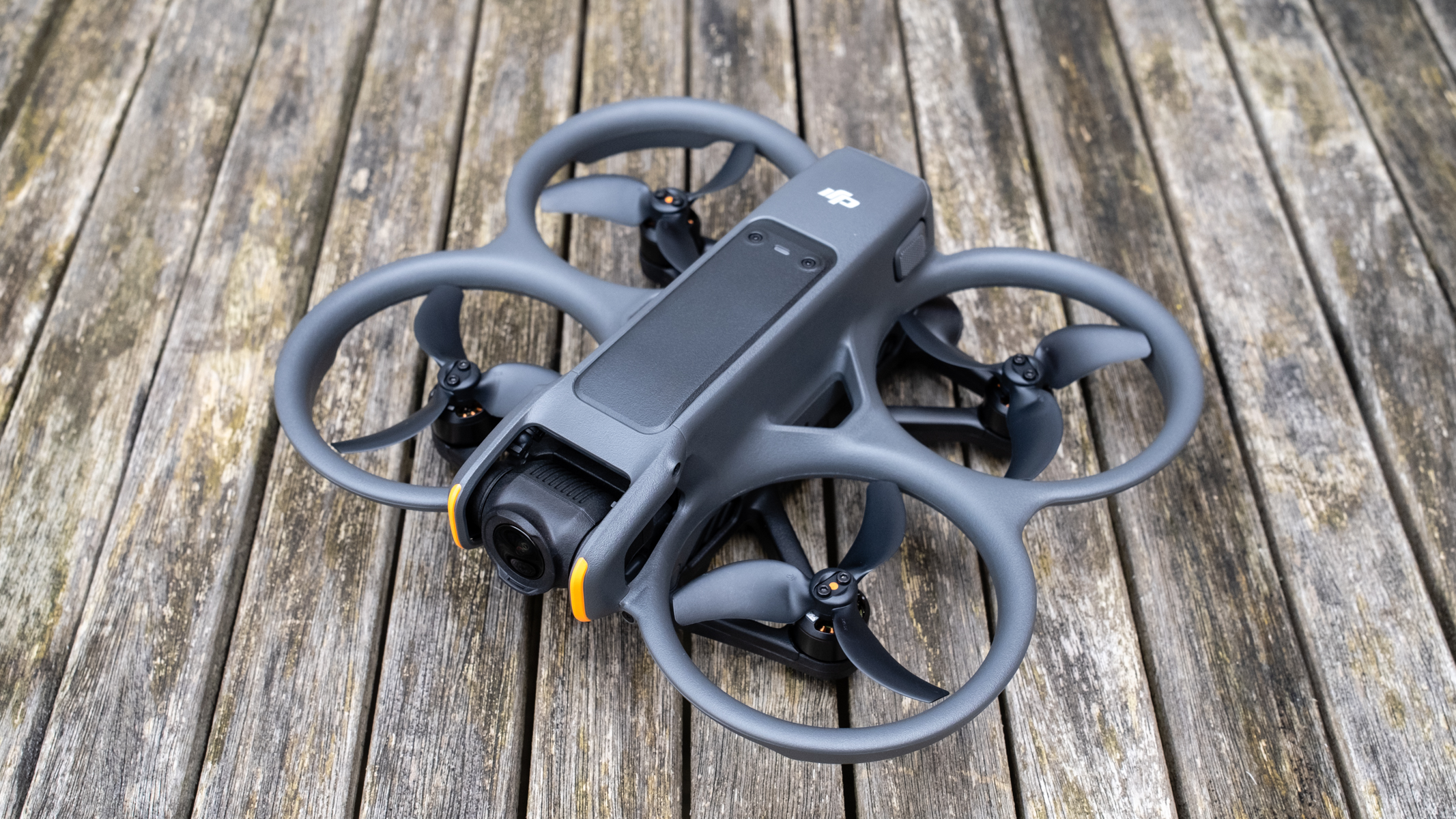
- Return to Home
- Turtle Mode
- Easy ACRO
Traditional FPV drones are typically pretty basic in terms of ‘smart’ features, but the Avata 2 offers functionality that’s common with more technologically advanced camera drones. This includes GPS positioning (GPS, Galileo and BeiDou), Return to Home, hovering when not in Manual mode, Fisheye Visual Positioning and ToF sensors covering the bottom and rear views for obstacle detection. There’s also a beeper that can be switched on in the goggles if you crash to help you find the drone.
A feature that is common with traditional FPV drones, namely cinewhoops, is Turtle Mode, which allows the pilot to flip the drone remotely if it crashes upside down. It may sound like much, but it can be a huge time-saver because you don’t have to always physically retrieve the Avata 2 after crashes. This is activated within the menu of the new DJI Goggles 3 or can be assigned to one of the custom buttons on the FPV Remote Controller 3.
The DJI Goggles 3 are a new addition, providing a clear and crisp 1080p 60fps feed of the FPV camera using DJI 04 Video Transmission. These take on a slightly different design from previous versions with a battery pack built into the easy-to-adjust head strap.
There’s also a forehead pad intended to increase comfort, which is difficult to assess in terms of effectiveness, but overall, the goggles are comfortable to wear. There are also cameras on the front of the goggles, so you can switch from the FPV view to these to see your surroundings, but simply lifting or removing the goggles is more effective because of the magnification and clarity they provide.
The Goggles 3 menus and settings can be accessed using the 5D button on the goggles or the DJI Motion 3 Controller using an AR curser to select options. Plus, Avata 2’s camera doesn’t suffer from strong fisheye distortion when the drone is certain angles so the image viewed in the goggles is fairly natural-looking.
The Motion 3 Controller makes flight incredibly easy and intuitive, and you can achieve a great deal with it. The downside, however, when compared to flying in Manual Mode with the DJI FPV Remote Controller 3, is that you can’t take full advantage of the agility of the drone; it’s much more difficult to quickly react to oncoming obstacles that could cause a crash, such as small tree branches seen only moments before impact in the goggles.
Crashing FPV drones is common, and even the easy-to-use Motion 3 Controller won’t stop you from crashing if you clip an object as you fly past or through, so DJI Refresh is well worth the investment for peace of mind.
One new feature of the new combination of Avata 2, Goggles 3, and Motion 3 is Easy ACRO. This is a set of three simple maneuvers that allow Motion Controller users to enjoy a tiny fraction of what can be achieved in Manual flight mode, which takes time to learn, ideally in a flight simulator that the FPV Remote Controller 3 is compatible with.
These include Easy Front/Back Flip, Easy Left/Right Roll and Easy 180° Drift. These are basic, but they can add a sense of FPV dynamism to videos for beginners. The FPV goggles and two controllers have many more features, but everything covered so far are some of the most important without listing everything on offer.
Transmission between the drone and goggles is naturally best in open spaces, where you can fly further without digital image break up or complete loss of image. With obstacles, such as trees or buildings, image break up is more common. So, if you’re flying in woodland, for instance, don’t fly too far away and even test distances with the motion controller because if you do begin to lose signal you can stop the drone and leave it hovering until you’ve moved closer when flying in Normal or Sport Modes.
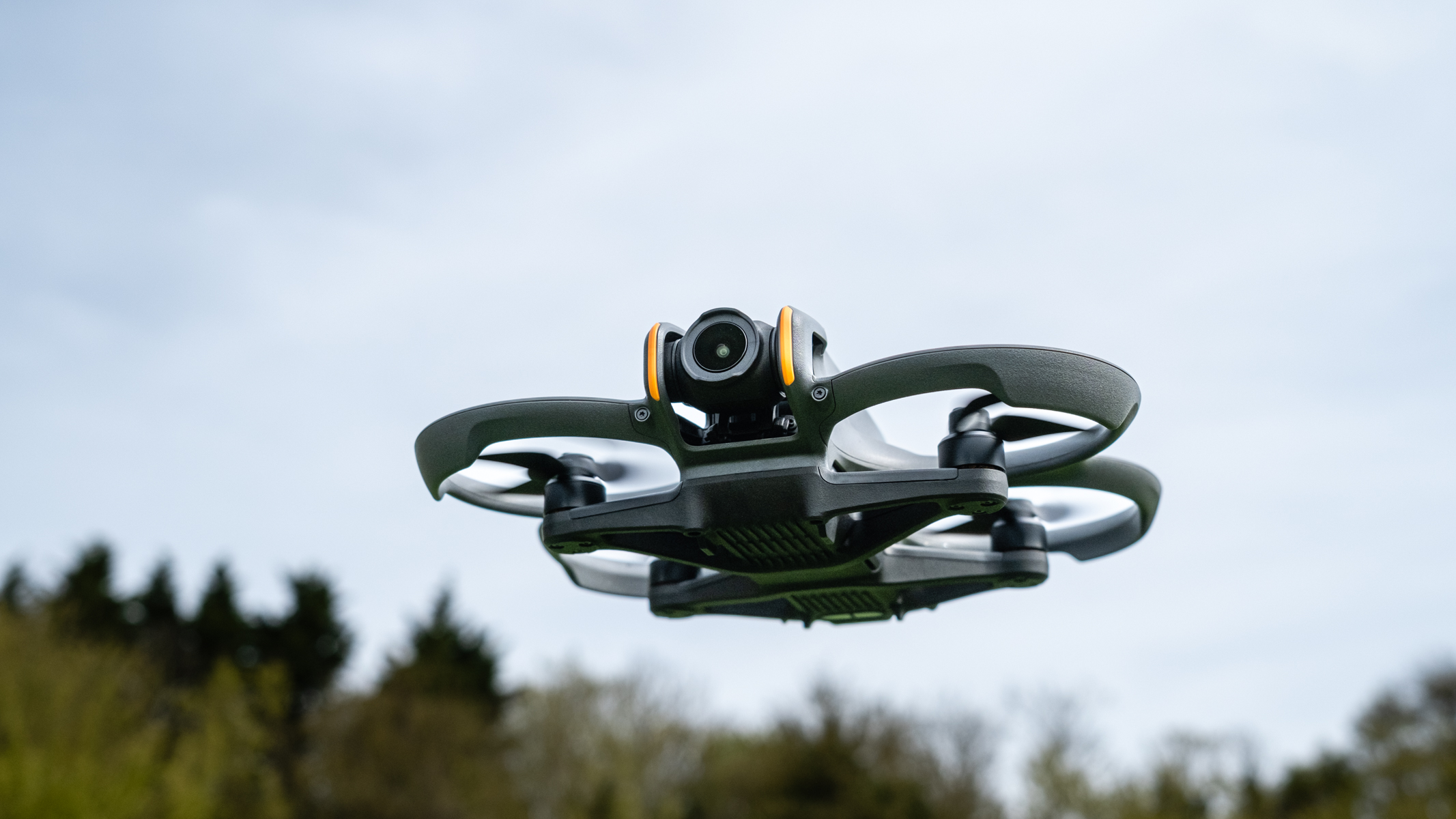
The Avata 2 is undoubtedly nimble, most notably in Manual Mode, where it can reach a horizontal speed of up to 60.39mph (up to 42.50mph in EU regions). Normal Mode clocks in at 17.89mph, while Sport Mode allows for speeds up to 35.79mph. EU regions will suffer when it comes to Manual mode, where the maximum speed is reduced, but Manual remains an exhilarating flight mode if you know how to fly in it.
When flying in Manual mode, the Avata behaves like a true FPV drone, where you have to constantly regulate the throttle and level the drone manually after maneuvers. But it’s in this mode that you can flip, roll, and dive the drone to capture the most exciting video footage, not to mention have a huge amount of fun. The drone handles well and can be flown smoothly in Manual Mode for fun and cinematic flights.
When adjusting settings for Manual Mode, leaving Attitude Limit enabled keeps the Avata 2 in Level Mode, which is like a beginner Manual Mode where the roll and pitch of the drone are limited and it auto levels. To fully enjoy Acro Mode, this has to be switched off. Acro Mode is no more or less difficult than other cinewhoop drones, but the flight times offered by the Avata 2 provide much more flight time.
DJI Avata 2: Performance
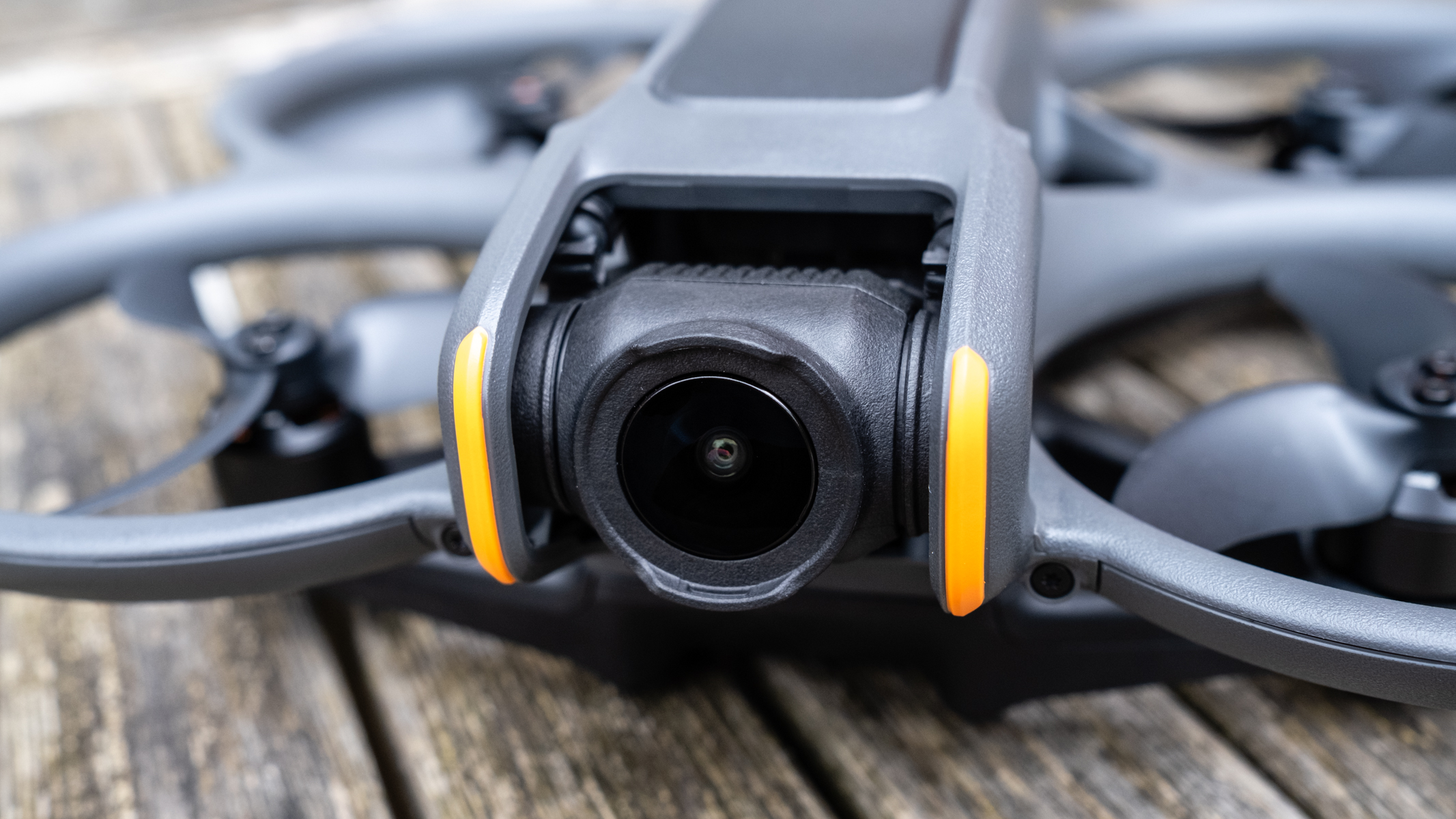
- 12MP 1/1.3-inch sensor
- Up to 4K 60fps video
- JPEG photos
FPV drones aren’t suited to stills photography, and the Avata 2 is no exception despite its ability to hover and capture photos in JPEG format. The problem here is simply that photos are often captured at awkward angles if the drone is rolling into the wind, so the horizon is rarely straight. But for video, which is where FPV drones excel, the Avata 2 captures incredibly immersive video. What’s more, the Electronic Image Stabilization does a fantastic job of smoothing the movement of the drone.
The Avata 2 only has a single camera that provides both the FPV feed and captures video, but this works perfectly well. The camera features a 1/1.3-inch 12MP sensor and provides a full-frame equivalent focal length of 12mm, with a 155-degree field of view.
The aperture is fixed at f/2.8 and the lens is fixed focus with a focus range of 23.6 inches / 60cm to infinity. This ensures that pretty much everything is in focus when capturing immersive FPV video, which is what the Avata 2 is ultimately designed for, alongside simply being fun to fly.
Video can be captured in 4K at up to 60fps, with 2.7K and 1080p offering frame rates up to 120fps for slow motion capture. The maximum bitrate is 130Mbps, which is 20 lower than the Avata, and color profiles include Normal for straight-out-of-camera footage and the D-Log M flat profile for color grading and professional use.
The camera can be set to Auto, which is useful when flying between brighter and darker areas, but for most situations shooting in Manual provides consistency in video footage. ND filters are essential for maintaining a correct shutter speed for video.
An ND filter set is available separately and is a must-have if you want the most natural-looking video possible. More advanced users may prefer to attach an action camera to the Avata 2 to capture video, and in time, attachments from third-party manufacturers will inevitably become available.
One useful camera feature that was unavailable in the review unit, perhaps because it’s running pre-release firmware, but we’ll have to wait and see if it appears, is a histogram; histograms are extremely useful for assessing exposure and removing the guesswork from the equation when setting exposure. Gridlines in the goggles were, however, available but whether or not these are useful will be a matter of personal preference.
DJI Avata 2: Price
The price of the Avata 2 is reasonable considering the features on offer and the advancements of the Goggles 3 and Motion 3 Controller. The drone is available in two kits: a single-battery Fly More Bundle for $999 / £879, which includes the DJI Motion 3 Controller, DJI Goggles 3, a PD (USB-C) charging and data cable, spare propellers and other basic accessories.
Then there’s the three-battery Fly More Bundle, which costs $1199 / £1049 and includes all of the above alongside a three-battery charging hub and an extremely useful carry bag. This kit makes the most sense because the charging hub, extra batteries, and the bag make charging more efficient, increase flight times, and make carrying the kit much easier.
Other accessories include the DJI FPV Remote Controller 3 which costs $199 / £149. You’ll need this if you plan to fly in Manual Mode or simply prefer a more traditional controller. Then there’s the DJI Avata 2 ND Filters Set which helps to maintain correct shutter speeds when capturing video, and this costs $79 / £59. For beginners, just one of the Fly More Bundles is ideal to get started, and these extra accessories are items you can buy at a later date if and when you need them.
Should you buy the DJI Avata 2?
If you’d like to get into flying FPV drones in the easiest way possible, without all the hassle of a traditional FPV drone, the DJI Avata 2 is the perfect way to do it. Then as you demand more control and decide to learn how to fly in Manual Mode, you can purchase the DJI FPV Remote Controller 3 and learn how to fly with an FPV simulator to reduce the risk of a serious crash straight away.
For more advanced FPV pilots, the Avata 2 isn’t self-build in the way that you’re probably used to, and if you crash and damage the drone repairs aren’t as simple, but the Avata 2 remains an enticing option because it blends the convenience of a camera drone with the fun and excitement of FPV drones.
If this drone isn’t for you
The Avata 2 may be a reasonable price for what’s on offer, but if you’d prefer a much less expensive cinewhoop FPV drone that can take a beating the BetaFPV Cetus X is a great option. The drone comes in a kit with everything you need to get started and is an inexpensive way to start your FPV journey in acro/manual mode. What’s more, it offers features suitable for both beginners and more advanced pilots.
FPV isn’t for everyone, and FPV drones aren’t suitable for stills photography. So, if your aim is simply to get up in the air to shoot photos and videos, a camera drone is going to be much more suitable. The DJI Mini 4 Pro is the best sub-250g model available. Image quality is excellent and the safety features available are unmatched in a drone of this size.
Mini drones are great because they’re regulator-friendly in most regions, but if you’d like a camera drone with more power and dual cameras, the DJI Air 3 has a wide-angle and telephoto camera. Plus, it offers excellent safety features like the Mini 4 Pro and DJI Mavic 3 drones but is much less expensive than the prosumer DJI Mavic 3 models.
 Unmanned Aerial Vehicle The latest drone news
Unmanned Aerial Vehicle The latest drone news
